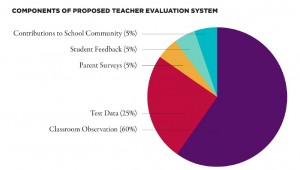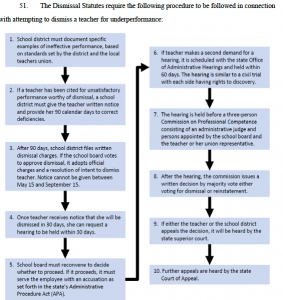As someone who engages in education policy advocacy and development for a living, it’s good to know opportunities abound for me and fellow policymakers to hear the voices of America’s teachers and to apply their perspective in crafting policy solutions to educational challenges. Apart from the traditional participation of teachers unions (American Federation of Teachers and National Education Association), a number of national and state-based initiatives (Accomplished California Teachers, Teach Plus, VIVA Project) have launched to inject the voices of teachers into education policy discussions.
But is anyone listening?
Policymakers attending the annual summit of the State Consortium on Educator Effectiveness (SCEE) last month were listening. While there, I was reminded of the power and wisdom of teachers while hearing 2011 National Teacher of the Year Michelle Shearer deliver the keynote address. She offered four key insights that add depth and complexity to the current policy conversation about effective teaching.
I believe every policymaker focused on education should hear what she had to say.
First, Shearer reminded us that, like students, educators are on a developmental continuum – always getting better. This matches our belief at New Teacher Center that “teachers are learners” and “great teachers are made, not born.”
Second, Shearer contended that much of what we want from great teaching – like compassion, caring, and relationships with students – cannot be measured or observed. Such dispositions are critically important but may be in danger of being lost within data-driven evaluation systems.
Third, Shearer shared that while teaching is competitive at times, it also must involve collaboration for the greater good. A group of successful public school teachers in Florida echoed this in “What turned our teachers into our favorites?,” an article about some of the common traits that great teachers share.
Lastly, Shearer told participants that effective teachers empower students to hold each other accountable for learning and for the use of classroom time. A teacher might do this by instructing the entire class to work as a group toward a common goal. To an extent, the use of such an instructional strategy is contingent upon a school leader who creates a school environment where teachers have opportunities to share decision-making and the freedom to teach outside the box.
This view of teaching is largely antithetical to the behavior-focused accountability systems created by federal and state policies that assume and penalize underperformance. Shearer’s conception involves a teacher-driven spirit of collective responsibility built around a shared vision for learning. Effective teaching grows from cooperation rather than top-down control.
So how can we think systemically and unleash the power and wisdom of teacher leaders as we develop policy initiatives aimed at improving teaching and learning?
* Consider the implications of proposed education reforms on the complexities of teaching, including the work of Superintendent of Public Instruction Tom Torlakson’s Educator Excellence Task Force. Teachers should be given a seat at the table to develop and implement policy. The Task Force has done this.
* Create an environment that empowers teachers and enables great teaching. The heads of eight influential policy organizations (U.S. Department of Education, American Federation of Teachers, National Education Association, Council of Chief State School Officers, American Association of School Administrators, National School Boards Association, Council of Great City Schools, and the Federal Mediation and Conciliation Services) took a step in the right direction on this recently by signing a shared vision for the future of the teaching profession. They set common goals and agreed on what it will take to meet them, including “Conditions for Successful Teaching and Learning.” The statement rightly acknowledges that “high-functioning systems can amplify the accomplishments of their educators, but a dysfunctional school or district can undermine the impact of even the best teachers.” We are working with a number of state partners to build such district and school climates.
* Establish a policy framework that provides for individualized professional development for beginning and veteran educators and regular opportunities for teachers to collaborate, reflect, and learn. The state of Colorado’s comprehensive effort deserves attention. According to the state’s website, “the promise of educator effectiveness requires much more than evaluation.” Colorado employs five strategies for optimizing educator effectiveness: (1) hiring excellent candidates, (2) boosting teaching effectiveness through evaluation and targeted professional development, (3) retaining and leveraging top teaching talent, (4) prioritizing effective educators for high-need students, and (5) improving or dismissing less effective educators.
* Involve teachers in key decisions around the development and selection of frameworks, curricula, and instructional tools associated with Common Core State Standards implementation. Doing so would help teachers understand and embrace the new standards and would contribute to the desired impact on classroom instruction.
And, more simply, let’s listen to teachers.
Liam Goldrick is Director of Policy at New Teacher Center, a national nonprofit organization dedicated to improving student learning by accelerating the effectiveness of teachers and school leaders. Liam leads a range of initiatives designed to strengthen new educator induction and mentoring policies at the state and national levels. Most recently, he served as project lead on the NTC Review of State Policies on Teacher Induction, which includes a policy paper and individual policy summaries for all 50 states.

